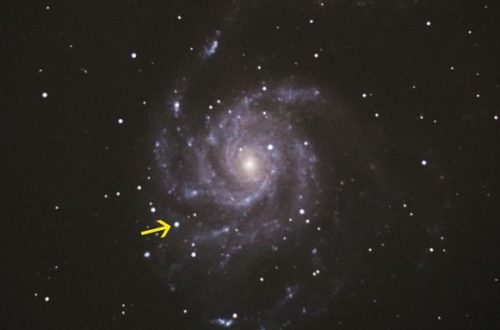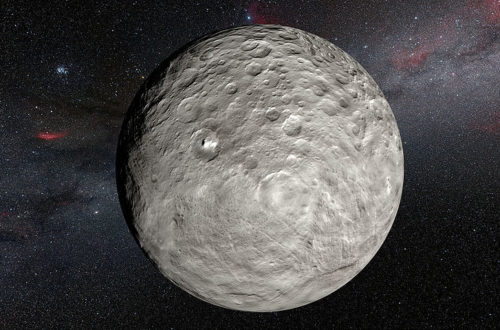What Is an H II Region?
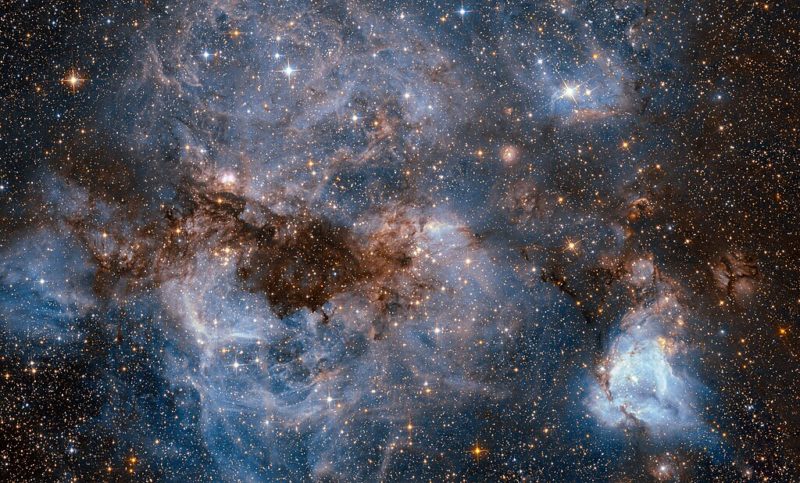
In the vast canvas of the cosmos, where stars are born and galaxies thrive, exists a captivating phenomenon—a celestial theater of glowing clouds known as H II regions. These enigmatic realms, teeming with ionized hydrogen gas and shaped by the tumultuous birth of massive stars, offer a mesmerizing glimpse into the cosmic ballet of creation.
Join the journey into these radiant nebulae, where stellar nurseries and the intricate dance between light and matter unfold, revealing the secrets of cosmic genesis.
Defining an H II Region
H II regions (also spelled as HII regions), formally known as ionized atomic hydrogen regions, represent distinct cosmic zones characterized by the prevalence of ionized atomic hydrogen (H II).
These regions owe their ionization to the intense ultraviolet radiation emitted by nearby hot, massive stars. This radiation interacts with the neutral hydrogen gas, causing it to shed electrons and transition into an ionized state. As a result, these regions appear as luminous clouds observable across various wavelengths of the electromagnetic spectrum, offering astronomers a unique window into the energetic processes occurring within these celestial realms.
The first H II region was discovered in 1610 by French astronomer Nicolas-Claude Fabri de Peiresc, when he discovered the diffuse nebulous nature of the Orion Nebula. Of course the true nature of H II regions was not yet known at the time.
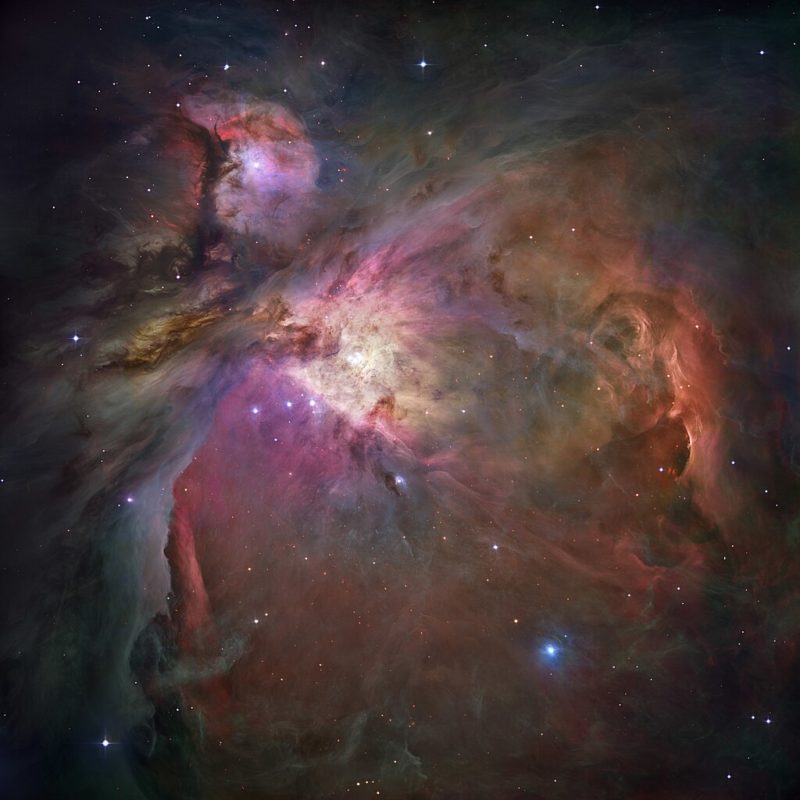
Significance of H II Regions in Astrophysics
The significance of H II regions in astrophysics is profound, owing to their integral role in unraveling the mysteries of stellar evolution and the dynamics of interstellar matter. These regions serve as crucial laboratories for studying the formation of massive stars, primarily due to their ionization attributed to the emission of ultraviolet radiation by these hot, young stellar bodies.
Understanding the ionization processes within H II regions is pivotal in comprehending the mechanisms underlying star birth and the subsequent influence of ionizing radiation on the surrounding interstellar medium. Moreover, the study of H II regions provides crucial insights into the larger cosmic processes shaping galaxies, their evolution, and the intricate interplay between radiation and matter in the vast expanse of the universe.
Formation and Ionization
The genesis of H II regions finds its origins within vast reservoirs of interstellar gas and dust known as giant molecular clouds (GMCs). These immense clouds, characterized by dense concentrations of molecular hydrogen (H2), serve as the cradles for stellar birth and the subsequent emergence of H II regions.
Within these giant molecular clouds, gravitational instabilities and density fluctuations induce the collapse of localized regions, initiating the formation of protostellar cores. Over time, these protostellar cores accrete matter and evolve into young, massive stars.
The transition to a hot, massive star status is marked by a culmination of mass and temperature thresholds, wherein the protostar becomes a powerful emitter of ultraviolet (UV) radiation. This emitted radiation serves as the primary ionizing source within the emerging H II regions.
Upon interaction with these energetic photons, the neutral hydrogen atoms absorb the high-energy radiation, leading to the disruption of the electron-proton bonds within the atoms. This absorption of energy provides sufficient momentum for the electrons to overcome the binding energies of the atoms, liberating them from their atomic orbits. Consequently, this process of ionization results in the formation of ionized hydrogen (protons) and free electrons within the H II region.
This transition from neutral to ionized gas marks a fundamental shift in the physical state of the region. The increasing presence of ionized hydrogen and free electrons alters the region’s optical and emission properties, leading to the characteristic glow and emission spectra observed from H II regions across the electromagnetic spectrum.
As ionization progresses, distinct boundaries form within the H II region, delineating areas rich in ionized hydrogen from those with residual neutral hydrogen. These boundaries enable astronomers to identify and study these celestial entities, unraveling the intricacies of stellar evolution.
Characteristics and Properties
Emission Spectra and Observational Features
H II regions exhibit distinct emission spectra and remarkable observational features, rendering them identifiable and crucial for astronomical study. The ionized hydrogen gas within these regions emits light across various wavelengths, providing astronomers with a wealth of information about their composition, temperature, and dynamics.
One prominent spectral line originating from H II regions is the hydrogen-alpha line (H-alpha), emitted at a wavelength of 656.3 nanometers. This spectral line serves as a key indicator of the presence excited un-ionized hydrogen, offering astronomers a reliable means to detect and study H II regions. Additionally, the emission from these regions spans the electromagnetic spectrum, ranging from ultraviolet to infrared wavelengths, allowing astronomers to observe them using diverse observational techniques and instruments.
Observationally, H II regions appear as luminous and often colorful patches within the interstellar medium when viewed through telescopes. Their distinct appearance arises from the emission of light by ionized hydrogen, showcasing various hues depending on factors such as the density of the gas, the intensity of ionizing radiation, and the evolutionary stage of the region. These captivating visual features make H II regions compelling subjects for observational studies, enabling astronomers to unravel the intricacies of their formation, evolution, and impact on the surrounding cosmic environment.
Size and Distribution in Galaxies
H II regions exhibit a diverse range of sizes and distribution patterns across galaxies, reflecting the underlying dynamics of star formation and the evolving interstellar medium.
Sizes of H II regions vary widely, ranging from a few light-years to several hundred light-years in diameter. The dimensions of these regions depend on factors such as the intensity of ionizing radiation, the mass and age of the associated massive stars, and the density and composition of the surrounding interstellar medium. Larger and more luminous H II regions often indicate the presence of multiple massive stars, while smaller regions may signify isolated or less massive stellar formations.

NASA, ESA, S. Beckwith (STScI), and The Hubble Heritage Team (STScI/AURA).
The distribution of H II regions within galaxies showcases patterns that correlate with regions of active star formation. Spiral galaxies, for instance, often exhibit a spiral arm structure containing numerous H II regions. These regions cluster in areas with higher concentrations of molecular clouds, where the conditions are conducive to stellar birth. In contrast, elliptical galaxies rarely contain H II regions due to reduced ongoing star formation activity compared to actively star-forming spiral galaxies.
Observationally, the distribution and abundance of H II regions provide valuable insights into the evolutionary stages of galaxies. Their presence and spatial arrangement within galactic structures offer clues about the history of star formation, the dynamics of the interstellar medium, and the overall evolutionary trajectory of galaxies. Studying the size and distribution of H II regions contributes significantly to our understanding of the processes shaping galaxies and the intricate interplay between stars, gas, and the broader cosmic environment.
Morphology and Classification
Strömgren Spheres
Strömgren Spheres represent a critical concept within the classification of H II regions, delineating a theoretical model proposed by Bengt Strömgren in the mid-20th century. These theoretical spheres describe a simplified but fundamental understanding of the ionization and structure of H II regions.
The concept revolves around the idea of an equilibrium between ionizing radiation from a massive star and the recombination of ionized hydrogen within a specific volume of interstellar gas. In this model, a hot, massive star emits intense ultraviolet radiation, creating an ionization front at the boundary between the ionized gas and the neutral surrounding medium. The Strömgren Sphere defines the volume of space where this equilibrium between ionization and recombination occurs. The Rosette Nebula is the most prominent example of a Strömgren sphere.
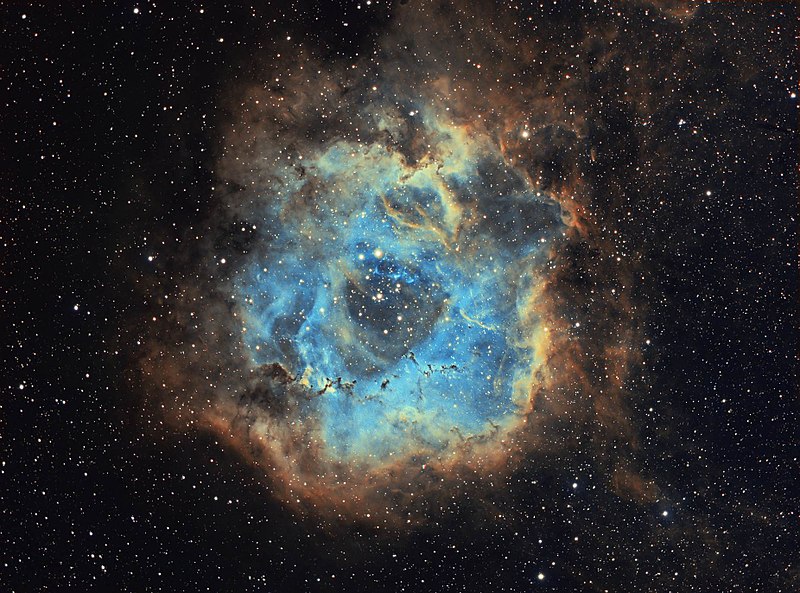
The size of a Strömgren Sphere is contingent upon factors such as the luminosity of the central ionizing star, the density of the surrounding gas, and the rate of ionization and recombination processes. Typically, Strömgren Spheres have diameters ranging from a few to tens of light-years.
Within the vast expanse of an H II region, multiple Strömgren Spheres can coexist, each encompassing a distinct volume where the equilibrium between ionization and recombination processes occurs. In regions where multiple hot, massive stars are present, each emitting its own intense ultraviolet radiation, overlapping or adjacent Strömgren Spheres can form.
Giant H II Regions vs. Compact H II Regions
H II regions exhibit a classification into two primary categories: giant and compact, based on their size, luminosity, and the nature of ionizing sources within these regions.
Giant H II regions are expansive, luminous stellar nurseries that span significant distances within galaxies. These regions typically arise in environments rich in molecular clouds, where massive stars, often in clusters or associations, emit intense ultraviolet radiation. The ionization of vast volumes of interstellar gas results in the formation of these extensive and luminous regions. Giant H II regions, characterized by their size, can extend over hundreds of light-years and serve as active sites of ongoing star formation within galaxies.
Compact H II regions are smaller, more concentrated areas of ionized gas within the interstellar medium. These regions are often associated with individual, isolated massive stars or small stellar clusters. Compact H II regions exhibit higher densities of ionized gas compared to giant H II regions, typically covering smaller spatial extents, ranging from a few to several light-years.
Evolutionary Stages
H II regions progress through distinct evolutionary stages, each delineating different phases in their development within the interstellar medium.
Ionization and Expansion
The initial phase marks the birth of an H II region, triggered by the intense ultraviolet radiation emitted by hot, massive stars. As the ionizing radiation interacts with the surrounding neutral hydrogen gas, ionization begins, leading to the formation of an ionization front. During this stage, the ionized gas expands into the surrounding interstellar medium, carving out a cavity within the molecular cloud.
Strömgren Sphere Formation
As ionization continues, the formation of Strömgren Spheres signifies the establishment of an equilibrium between ionizing radiation and recombination processes within a defined volume of the interstellar gas. These Strömgren Spheres delineate regions where ionization and recombination reach a balance, representing a theoretical model of the H II region’s structure.
Maturation and Evolution
Over time, as the central ionizing sources persist, H II regions evolve. They undergo changes in size, density, and luminosity, influenced by factors such as the energy output of the central stars, the density of the surrounding interstellar medium, and the presence of stellar clusters or associations. Giant H II regions undergo significant expansion, while compact H II regions may persist in their smaller, denser forms.
Dissipation and Interaction
The lifespan of an H II region spans several million years, largely influenced by the radiation pressure exerted by the hot, youthful stars within it. Over time, this radiation pressure drives a significant portion of the gas away from the region, marking the onset of its dissipation.
Surprisingly, the entire process proves to be rather inefficient, with less than 10 percent of the gas within the H II region contributing to the formation of new stars before the remaining gas is expelled. Additionally, contributing to the loss of gas are the inevitable supernova explosions resulting from the most massive stars within the region. These explosive events, occurring relatively swiftly within 1–2 million years, further accelerate the dispersal of gas from the H II region, shaping its evolution and interaction with the surrounding interstellar medium.
Conclusion
H II regions, luminous cosmic nurseries of ionized hydrogen, unveil the secrets of stellar birth and interstellar dynamics. From massive stars’ genesis within molecular clouds to their evolution and dispersion, these regions, observed across wavelengths, offer a window into galactic evolution. Their study, aided by telescopic observations, paints a vivid picture of cosmic interplay, shaping our understanding of stellar life cycles and the universe’s evolution.
Read more about some notable H II regions: Rosette Nebula, North America Nebula, Wizard Nebula, Thor’s Helmet Nebula, Pacman Nebula.
Would you like to receive similar articles by email?



